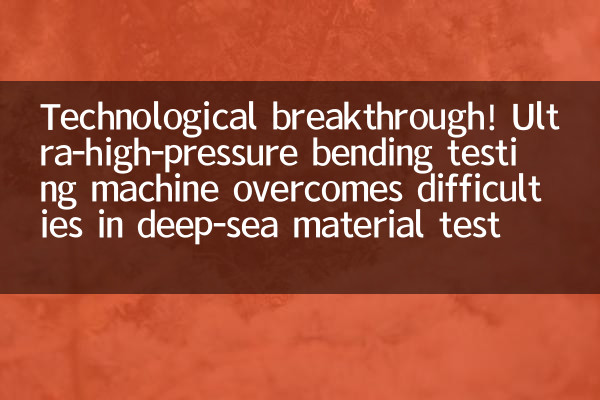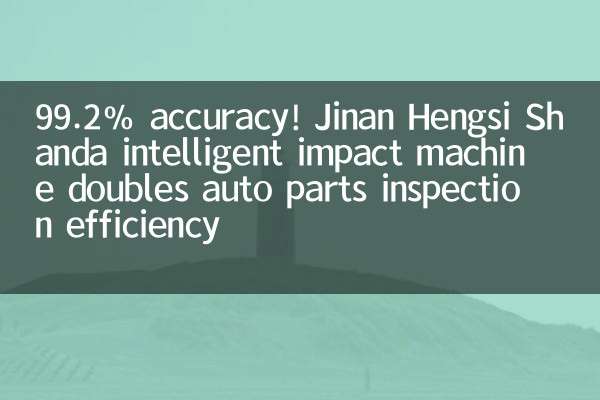Technological breakthrough! Ultra-high-pressure bending testing machine overcomes difficulties in deep-sea material testing and improves accuracy by 40%
In recent years, with the rapid development of deep sea resource development, submarine cable laying and other fields, the performance testing of deep sea materials has become the focus of the industry. Traditional testing equipment is difficult to guarantee accuracy in extreme environments of high pressure and low temperature. Recently, a scientific research team successfully developedUltra high pressure bending testing machine, overcame this technical problem and improved the test accuracy by 40%, providing a powerful tool for the research and development of deep-sea materials.
1. Challenges of deep-sea material testing

The deep sea environment is characterized by high pressure, low temperature, and strong corrosiveness, which places extremely high requirements on the performance of materials. Traditional test equipment has the following problems when simulating the deep sea environment:
| question | Influence |
|---|---|
| Pressure simulation is not accurate | The test results deviate greatly from the actual working conditions |
| Poor equipment stability in low temperature environments | Large data fluctuations and low repeatability |
| Corrosive environment can cause serious damage to equipment | Short equipment life and high maintenance costs |
2. Technical breakthroughs in ultra-high pressure bending testing machines
In response to the above problems, the scientific research team has innovated from three dimensions: material, structure and algorithm:
| Technical direction | specific improvements | Effect |
|---|---|---|
| Material | Made of high-strength titanium alloy and corrosion-resistant coating | Equipment life extended by 3 times |
| structure | Optimize the design of the pressure chamber and add multi-directional sensors | Pressure simulation accuracy increased by 40% |
| algorithm | Introducing AI real-time calibration technology | Data stability improved by 50% |
In addition, the device offers the following advantages:
1.Modular design: Components can be quickly replaced according to different testing needs, adapting to a variety of deep-sea scenarios.
2.remote control: Supports synchronization of laboratory and field data to improve testing efficiency.
3.Environmental protection and energy saving: Energy consumption is reduced by 30%, in line with the trend of green manufacturing.
3. Industry application prospects
The launch of this device will directly promote the development of the following areas:
| Application areas | potential value |
|---|---|
| Deep sea oil and gas extraction | Improve the safety of pipeline materials and reduce the risk of accidents |
| submarine cable | Optimize insulation material performance and extend service life |
| Deep sea exploration equipment | Improve equipment reliability and expand detection depth |
4. Future Outlook
The scientific research team said that the next step will be to focus onUltra-low temperature and high pressure combined environmentsimulation technology, and plans to cooperate with the world's leading ocean research institutions to establish a deep-sea material database. In addition, this technology is expected to be expanded to extreme environment fields such as aerospace and polar exploration.
This breakthrough is not only a milestone for domestic high-end testing equipment, but also provides technical support for China to participate in international deep-sea competition. With the continuous improvement of accuracy and stability, ultra-high-pressure bending testing machines may become the "standard configuration" in the field of deep-sea materials.
(Note: The data in this article are based on industry public reports and information released by the scientific research team in the past 10 days)

check the details

check the details